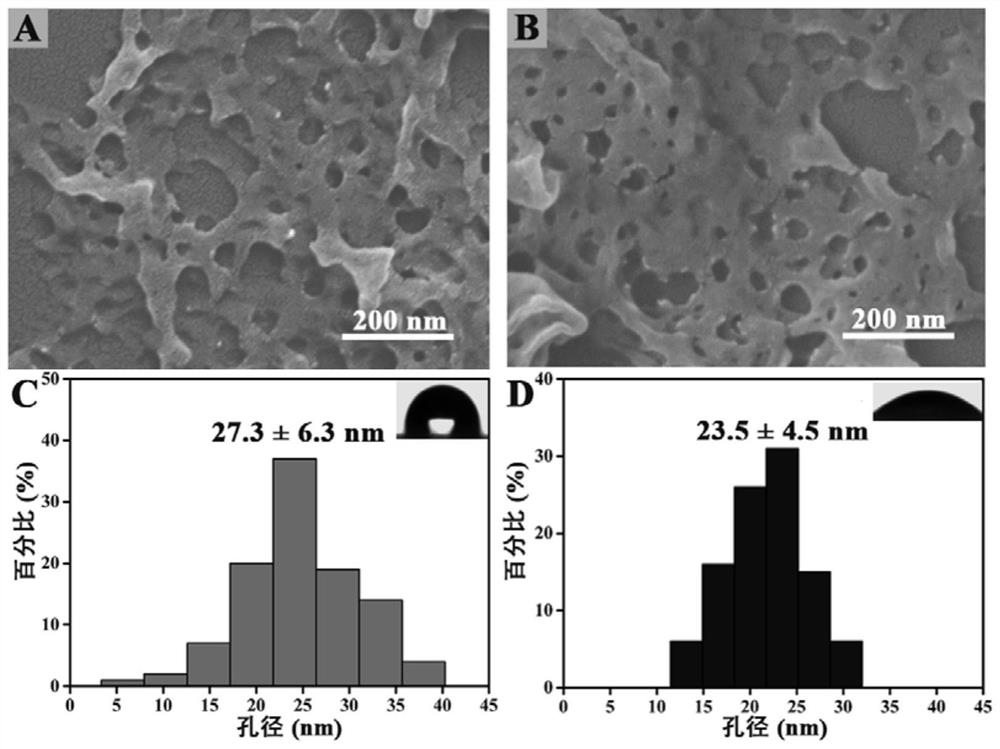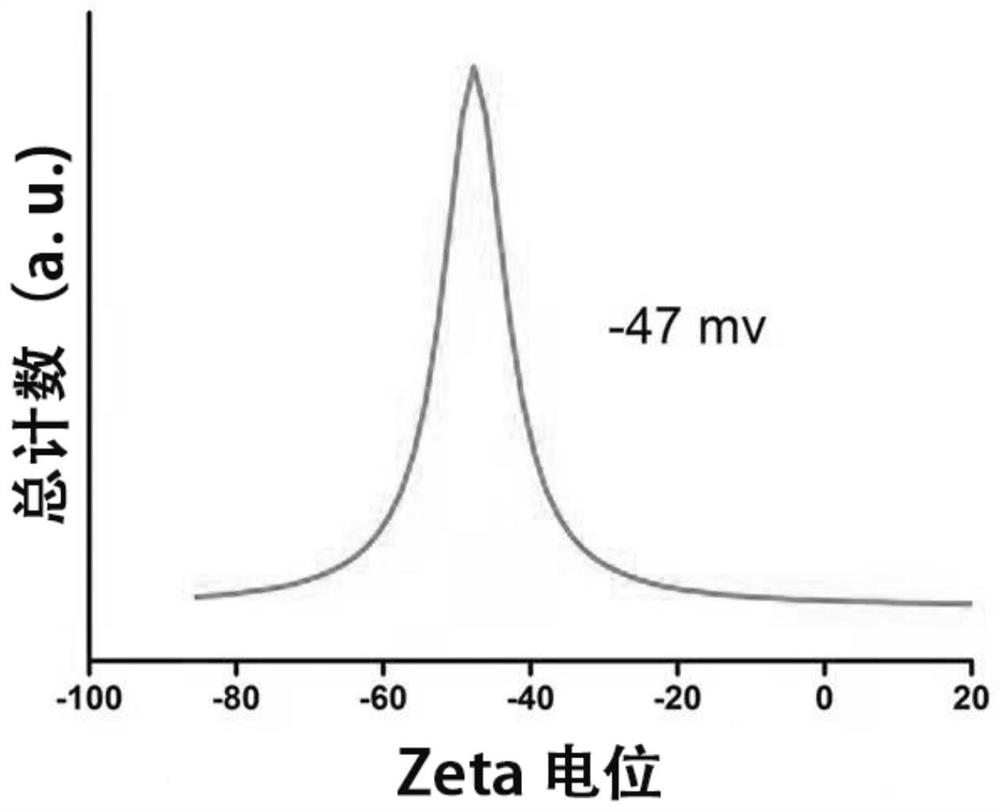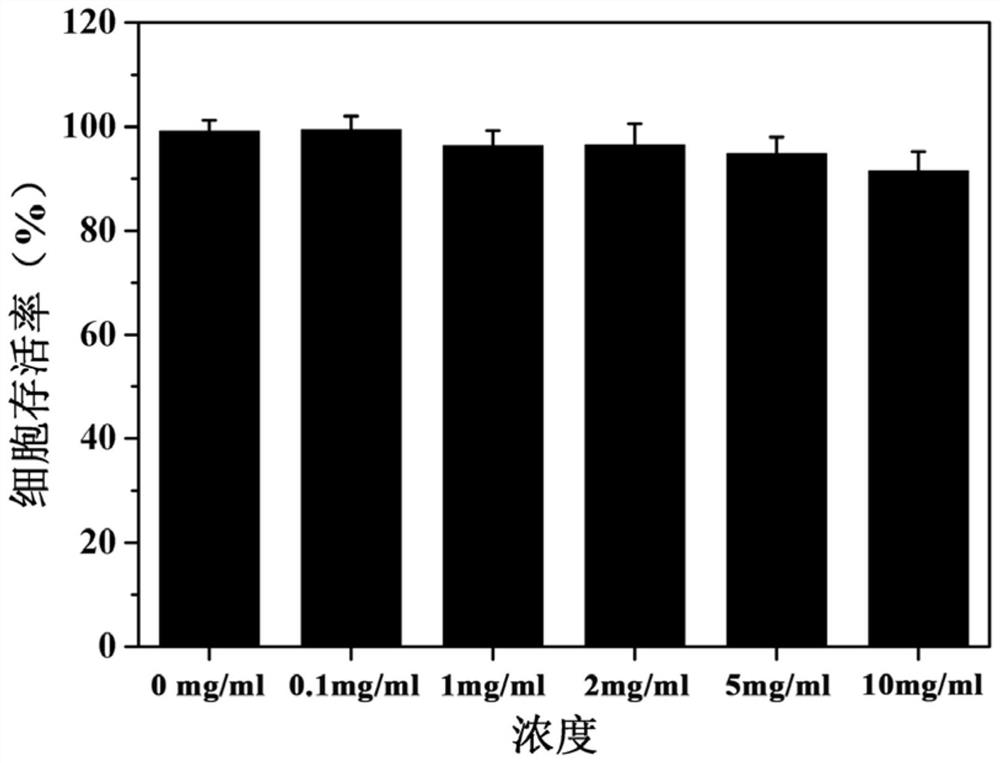Hydrophilic negatively-charged porous nano-film for repairing chronic kidney disease as well as preparation method and application of hydrophilic negatively-charged porous nano-film
A nano-membrane and chronic kidney disease technology, applied in prosthetics, tissue regeneration, medical science, etc., can solve the problems of complex preparation methods, easy to cause thrombosis, etc., achieve simple and clear routes, improve hydrophilicity, and enhance biocompatibility Effect
- Summary
- Abstract
- Description
- Claims
- Application Information
AI Technical Summary
Problems solved by technology
Method used
Image
Examples
Embodiment 1
[0041] (1) 0.125 mmol of sucrose and 0.1 mol of L-lactide were added to the round-bottomed flask, and 1 mmol of the catalyst stannous isooctanoate was added, and nitrogen gas was passed for 40 minutes to remove the air in the reaction flask, and then sealed, at 100 The reaction was stirred at ℃ for 24 hours to obtain 8-arm star-shaped polylactic acid (G 1- (OH) 8 );
[0042] (2) G is obtained by applying the above 1- (OH) 8 Dissolve with dichloromethane and precipitate with methanol, respectively, and collect the product by suction filtration. After repeating 3 times, vacuum drying at 45 °C for 8 hours to obtain G 1- (OH) 8 White powder;
[0043] (3) 1 mmol of G 1- (OH) 8 The white powder was dissolved in anhydrous 1,4-dioxane, and 2 mmol of methacrylic anhydride, 2 mmol of 4-dimethylaminopyridine and 2 mmol of 3-ethylamine were added, and the reaction was vigorously stirred at room temperature for 24 hours. , to obtain an 8-arm star-shaped polylactic acid (G 2 -(meth...
Embodiment 2
[0052] Podocytes (purchased from ATCC, USA) were grown to at least 80% confluent, digested with trypsin, and made into 5*10 4 100ul / ml of cell suspension, planted in a 96-well plate for 24 hours, replaced with serum-free basal medium for starvation for 6 hours to synchronize the cell state, and used the basal medium to target the podocytes prepared in Example 1. The hydrophilic and negatively charged porous nano-films are configured into different concentrations (0.1mg / ml, 1mg / ml, 2mg / ml, 5mg / ml, 10mg / ml), drop 10ul into a 96-well plate, and set 3 duplicate wells for each concentration . At the same time, a normal control group without material intervention and a cell-free basal medium blank group were added for comparison. After culturing cells in each well for 24 hours, 10ul of cck-8 reagent was added dropwise, and after 1 hour, the absorbance at 450 nm wavelength was measured with a microplate reader, and the experiment was repeated three times. see the results image 3 ...
Embodiment 3
[0054] The BALB / c mice were accurately weighed and randomly divided into 3 groups, namely the control group, the unmodified PEG negatively charged porous nanofilm group (prepared according to the step (7) of Example 1) and the modified PEG micelles of Example 1. Cell-targeted hydrophilic negatively charged porous nanofilm group, 5 mice in each group, mice were injected with saline, unmodified PEG negatively charged porous nanofilm (30 mg / kg) and modified PEG negatively charged porous nanofilm through tail vein respectively Nanofilm (30mg / kg). All the mice in the unmodified PEG group had various degrees of wheezing and suffocation within one minute after injection, indicating pulmonary thrombosis; the vital signs of the mice in the control group and the modified PEG group were normal, and all the mice were sacrificed immediately. The lungs and livers were collected, and H&E sections of the organs were prepared. Finally, the pathological changes of the organs were observed under...
PUM
 Login to View More
Login to View More Abstract
Description
Claims
Application Information
 Login to View More
Login to View More - R&D
- Intellectual Property
- Life Sciences
- Materials
- Tech Scout
- Unparalleled Data Quality
- Higher Quality Content
- 60% Fewer Hallucinations
Browse by: Latest US Patents, China's latest patents, Technical Efficacy Thesaurus, Application Domain, Technology Topic, Popular Technical Reports.
© 2025 PatSnap. All rights reserved.Legal|Privacy policy|Modern Slavery Act Transparency Statement|Sitemap|About US| Contact US: help@patsnap.com



